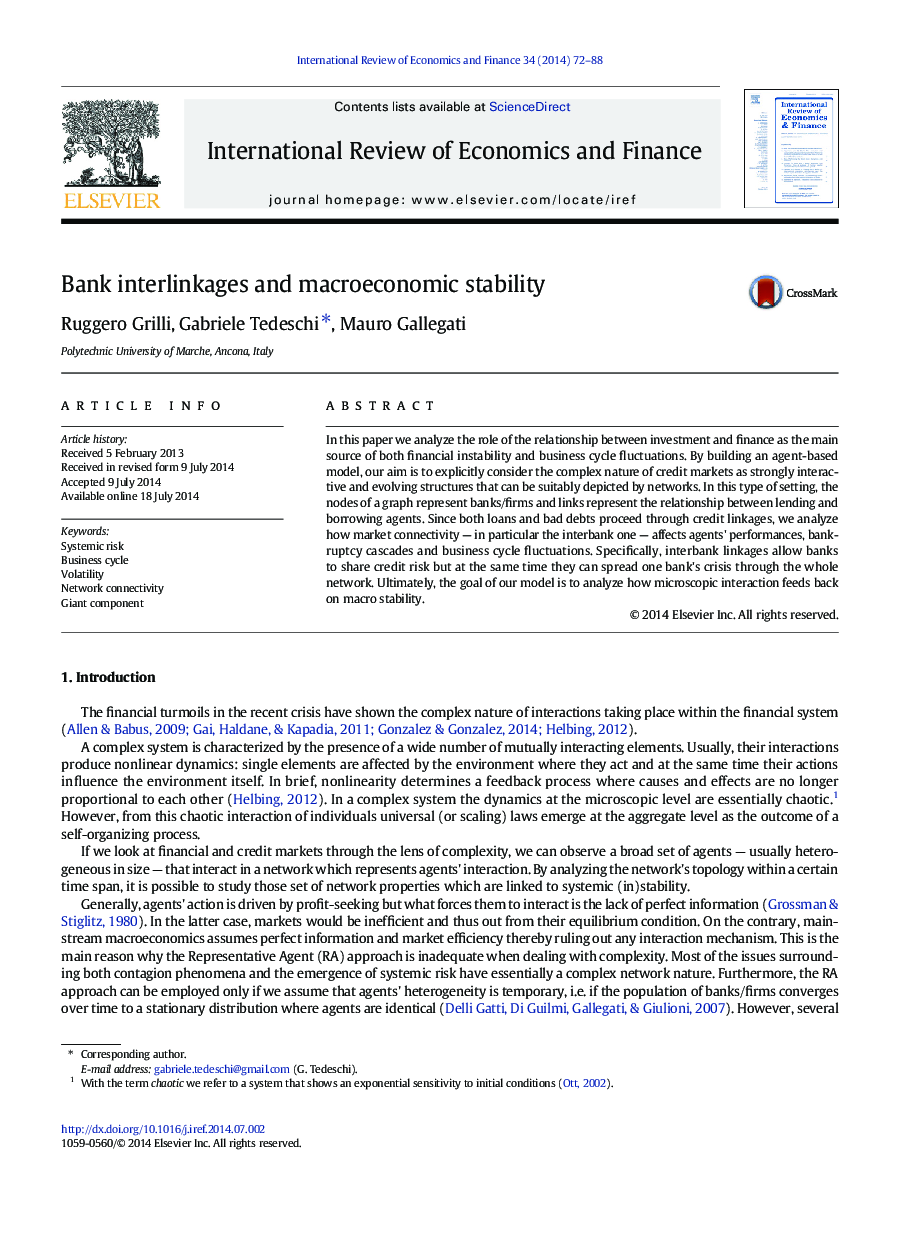| Article ID | Journal | Published Year | Pages | File Type |
|---|---|---|---|---|
| 5083584 | International Review of Economics & Finance | 2014 | 17 Pages |
â¢Higher banks connectivity increases the agent's financial fragility.â¢It also generates larger bankruptcy cascades due the larger systemic risk.â¢High interbank linkages have no effect on economic growth.â¢But high connectivity generates uncertainty as shown by volatility clustering.â¢Results also indicate that heterogeneity contributes to instability.
In this paper we analyze the role of the relationship between investment and finance as the main source of both financial instability and business cycle fluctuations. By building an agent-based model, our aim is to explicitly consider the complex nature of credit markets as strongly interactive and evolving structures that can be suitably depicted by networks. In this type of setting, the nodes of a graph represent banks/firms and links represent the relationship between lending and borrowing agents. Since both loans and bad debts proceed through credit linkages, we analyze how market connectivity - in particular the interbank one - affects agents' performances, bankruptcy cascades and business cycle fluctuations. Specifically, interbank linkages allow banks to share credit risk but at the same time they can spread one bank's crisis through the whole network. Ultimately, the goal of our model is to analyze how microscopic interaction feeds back on macro stability.
